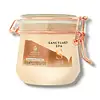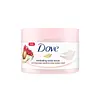What's inside
What's inside
 Key Ingredients
Key Ingredients

 Benefits
Benefits

 Concerns
Concerns

 Ingredients Side-by-side
Ingredients Side-by-side

Sodium Chloride
MaskingHelianthus Annuus Seed Oil
EmollientMaris Sal
Skin ConditioningIsopropyl Palmitate
EmollientVegetable Oil
Skin ConditioningCaprylic/Capric Triglyceride
MaskingTocopheryl Acetate
AntioxidantPrunus Amygdalus Dulcis Oil
Skin ConditioningCocos Nucifera Oil
MaskingSimmondsia Chinensis Seed Oil
EmollientParfum
MaskingTriticum Vulgare Germ Oil
EmollientIsopropyl Myristate
EmollientOenothera Biennis Oil
EmollientTocopherol
AntioxidantHexyl Cinnamal
PerfumingLinalool
PerfumingLimonene
PerfumingBenzyl Salicylate
PerfumingCI 47000
Cosmetic ColorantCI 26100
Cosmetic ColorantSodium Chloride, Helianthus Annuus Seed Oil, Maris Sal, Isopropyl Palmitate, Vegetable Oil, Caprylic/Capric Triglyceride, Tocopheryl Acetate, Prunus Amygdalus Dulcis Oil, Cocos Nucifera Oil, Simmondsia Chinensis Seed Oil, Parfum, Triticum Vulgare Germ Oil, Isopropyl Myristate, Oenothera Biennis Oil, Tocopherol, Hexyl Cinnamal, Linalool, Limonene, Benzyl Salicylate, CI 47000, CI 26100
Water
Skin ConditioningGlycerin
HumectantHydrated Silica
AbrasiveSodium Lauroyl Isethionate
CleansingStearic Acid
CleansingSodium Stearate
CleansingCocamidopropyl Betaine
CleansingParfum
MaskingSodium Palmitate
CleansingCetearyl Alcohol
EmollientLauric Acid
CleansingSodium Isethionate
CleansingJojoba Esters
EmollientPhenoxyethanol
PreservativeHydroxyacetophenone
AntioxidantSodium Chloride
MaskingSodium Palm Kernelate
CleansingTetrasodium EDTA
Sodium Benzoate
MaskingZinc Oxide
Cosmetic ColorantPunica Granatum Seed Powder
AbrasiveButyrospermum Parkii Butter
Skin ConditioningSodium Hydroxide
BufferingBenzyl Salicylate
PerfumingHexyl Cinnamal
PerfumingLinalool
PerfumingCI 77491
Cosmetic ColorantCI 77891
Cosmetic ColorantCI 17200
Cosmetic ColorantWater, Glycerin, Hydrated Silica, Sodium Lauroyl Isethionate, Stearic Acid, Sodium Stearate, Cocamidopropyl Betaine, Parfum, Sodium Palmitate, Cetearyl Alcohol, Lauric Acid, Sodium Isethionate, Jojoba Esters, Phenoxyethanol, Hydroxyacetophenone, Sodium Chloride, Sodium Palm Kernelate, Tetrasodium EDTA, Sodium Benzoate, Zinc Oxide, Punica Granatum Seed Powder, Butyrospermum Parkii Butter, Sodium Hydroxide, Benzyl Salicylate, Hexyl Cinnamal, Linalool, CI 77491, CI 77891, CI 17200
 Reviews
Reviews

Ingredients Explained
These ingredients are found in both products.
Ingredients higher up in an ingredient list are typically present in a larger amount.
Benzyl Salicylate is a solvent and fragrance additive. It is an ester of benzyl alcohol and salicylic acid. This ingredient can be naturally found in some plants and plant extracts.
In fragrances, Benzyl Salicylate may be a solvent or a fragrance component. In synthetic musk scents, it is used as a solvent. For floral fragrances such as lilac and jasmine, it is used as a fragrance component. The natural scent of Benzyl Salicylate is described as "lightly-sweet, slightly balsamic".
While Benzyl Salicylate has been associated with contact dermatitis and allergies, emerging studies show it may not be caused by this ingredient alone.
However, this ingredient is often used with fragrances and other components that may cause allergies. It is still listed as a known allergen in the EU. We recommend speaking with a professional if you have concerns.
Another study from 2021 shows Benzyl Salicylate may have anti-inflammatory properties.
Learn more about Benzyl SalicylateHexyl Cinnamal is a fragrance ingredient with a similar scent to jasmine. It can be naturally found in chamomile essential oil.
This ingredient is a known EU allergen and may sensitize the skin. The EU requires this ingredient to be listed separately on an ingredients list.
Hexyl Cinnamal is not water soluble but is soluble in oils.
Learn more about Hexyl CinnamalLinalool is a fragrance and helps add scent to products. It's derived from common plants such as cinnamon, mint, citrus, and lavender.
Like Limonene, this ingredient oxidizes when exposed to air. Oxidized linalool can cause allergies and skin sensitivity.
This ingredient has a scent that is floral, spicy tropical, and citrus-like.
Learn more about LinaloolParfum is a catch-all term for an ingredient or more that is used to give a scent to products.
Also called "fragrance", this ingredient can be a blend of hundreds of chemicals or plant oils. This means every product with "fragrance" or "parfum" in the ingredients list is a different mixture.
For instance, Habanolide is a proprietary trade name for a specific aroma chemical. When used as a fragrance ingredient in cosmetics, most aroma chemicals fall under the broad labeling category of “FRAGRANCE” or “PARFUM” according to EU and US regulations.
The term 'parfum' or 'fragrance' is not regulated in many countries. In many cases, it is up to the brand to define this term.
For instance, many brands choose to label themselves as "fragrance-free" because they are not using synthetic fragrances. However, their products may still contain ingredients such as essential oils that are considered a fragrance by INCI standards.
One example is Calendula flower extract. Calendula is an essential oil that still imparts a scent or 'fragrance'.
Depending on the blend, the ingredients in the mixture can cause allergies and sensitivities on the skin. Some ingredients that are known EU allergens include linalool and citronellol.
Parfum can also be used to mask or cover an unpleasant scent.
The bottom line is: not all fragrances/parfum/ingredients are created equally. If you are worried about fragrances, we recommend taking a closer look at an ingredient. And of course, we always recommend speaking with a professional.
Learn more about ParfumChances are, you eat sodium chloride every day. Sodium Chloride is also known as table salt.
This ingredient has many purposes in skincare: thickener, emulsifier, and exfoliator.
You'll most likely find this ingredient in cleansers where it is used to create a gel-like texture. As an emulsifier, it also prevents ingredients from separating.
There is much debate on whether this ingredient is comedogenic. The short answer - comedogenic ratings don't tell the whole story. Learn more about comegodenic ratings here.
The concensus about this ingredient causing acne seems to be divided. Research is needed to understand if this ingredient does cause acne.
Scrubs may use salt as the primary exfoliating ingredient.
Learn more about Sodium Chloride